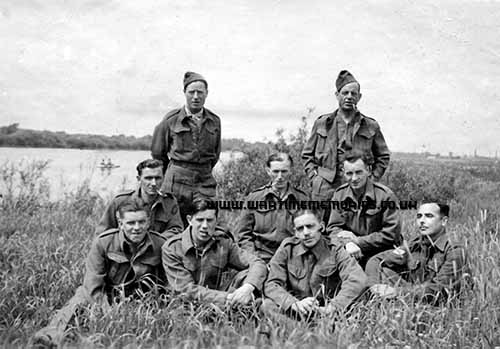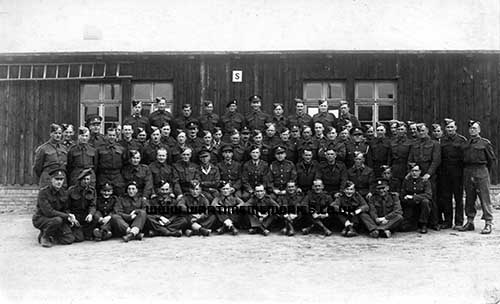Spr. Leslie Herbert Mitchell
British Army 210th Field Coy. Royal Engineers
from:91 Vale Road, Seaford, Sussex
In 1936, Leslie Mitchell had joined the Territorial Army, and qualified as a Pioneer DIII. In August 1939, he was mustered as a Sapper, 210th Field Coy, Royal Engineers and was mobilised in Feb or Mar 1940 to go to France, where the Regiment was deployed building or destroying bridges, roadworks or railways.
They were usually in the midst of the fighting, so when the order came to evacuate the Army at Dunkirk in May/June 1940, the Engineers were the last to leave, having tried to destroy any access behind them. Les's group were ready to go, but some of their comrades were lagging behind, so they went back to help, but were all captured by the Germans on 27th of May at Fletre. Les recalls that “The Germans just came up like wheat in the field and the French, (who were acting as their escort and support), threw up their hands and surrendered”.
Les spent the duration of the War in Stalag VIIIb, later Stalag 344, near Lamsdorf in Silesia. Les said that Lamsdorf was a small town and being in the centre of a wheat growing area, had a flour mill. The prisoners were put to work cleaning and enlarging the canals which supplied water and transport to the mill. The British prisoners also did the heavy work in the mines and road gangs, while the Italians and Poles worked on the farms. They all refused to do anything which would help the German war effort.
Les also said that the guards in the camp were German officers, but were older men, or men recovering from wounds, and on light duties before being returned to the Front, so though life in Stalag VIIIB/344 was tough, they managed fairly well, and the prisoners were also treated fairly well. They were able to strip ears of wheat as the passed the fields and smuggle it back to camp in the cuffs of their trousers, there to be made into porridge, a welcome supplement to camp food. Les took his turn at cooking for the men in his hut.
In 1945, as the Soviet armies resumed their offensive and advanced into Germany, Stalag 344 was evacuated on 22nd of January and the Soviet Army reached the camp on the 17th of March 1945. Only once did Les mention, and very briefly, that he survived the Death March by eating what he could scrounge along the roadsides and at the overnight camps. He said that they "woke up one morning and the German guards had gone". According to his service record, Les was liberated in Germany on 28th of April 1945. He was then repatriated to England, to return to a hero’s welcome at Newhaven, and received his demobilisation orders in February, 1946.
Les had married Win Novis in Newhaven in January 1940, and after the war worked as a dairyman on various farms in southern England for 10 years. With the Suez crisis looming and an offer from the Australian Government to attract English workers, he migrated to Australia in 1956 with Win and his young family. For three years he worked in Brisbane, Queensland, then in 1959 he joined the Australian Army, but was retrenched in 1961 in Wallangarra, a small town on the border of New South Wales and Queensland, and the main Ammunition Depot for the Army. He moved the family to Wallangarra and obtained a job at the local meatworks for a few months until he was offered a job as Steward at the Sergeant’s Mess. He worked there for about twenty years, when he was transferred to the Officer's Mess. After only a few months, he retired in March, 1983.

